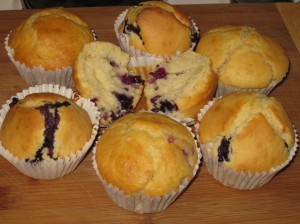So in part 1 I told you what I consider the 3 rules of a healthy diet. I think rule 2 needs further deconstruction. It also leads into my mini rant of dieting (in the fad sense). So rule 2 was “the perfect diet is the one that suits your body”. What does this really mean?
First my mini rant on the dirty word “diet”. Dictionary definition of diet: “the kinds of food that a person, animal or community habitually eats. Basically before the people become too smart for their own good diet was about what an organism ate to survive. But this has been twisted in modern society to focus more on the restrictions a person sets to lose weight, maintain weight or in some cases become over weight. I think we need to go back to the true definition and put less emphases on the weight aspect of food and more on the living/ survival aspect of food. Otherwise our children will be learning that animals like lions and sharks are not carnivorous (a diet of meat) but instead are on Atkins. Herbivorous animals will be categorised into either vegans or vegetarians depending on their consumption of animal by products. Scavengers like rats are binge eaters and omnivorous animals are fad dieters, following the latest trends. Yes this sounds ridiculous but our approach to food is becoming ridiculous. We need to stop using diet as a dirty word. A diet is what we eat and a healthy diet should not be about whether you are in the target BMI but whether what you are eating is allowing for your body to run at its very best. Ok rant over… sort of.
The best diet is like filling your car up with premium fuel, you’ll get the best mileage and your car runs smoothly, a goal we should aim for but not always possible. A good diet is like putting the right fuel in your car… it still runs well but you could improve (this is where most people sit or should at least aim for). A bad diet is putting the wrong fuel in your car… if your lucky your car will run for a little while but wont last as long as it should, unlucky and your car doesn’t start at all (this is where you need to get out of). Just like cars, different humans need different fuels. To continue with the car metaphor you wouldn’t fill a car on diesel if it runs on unleaded or visa versa and expect it to run at top performance. So you can’t fill your body with the wrong food for you (regardless of its social healthy or unhealthy tag) and expect to run at top performance.
What are the signs your fuel is not right? Well this is where it gets very tricky, mostly because everybody is different. The most significant sign is also the hardest to pick, most people just feel unwell, like something just isn’t right. There is also digestion signs like changes in frequency or consistency of faeces, nausea after eating and/or acid reflux. Then the non-digestion signs like insomnia, difficulty sleeping, tiredness, mood swings and/or dark circles under the eyes. There is the obvious weight gain and less obvious weight loss. Now these are signs and symptoms of a number of conditions not just food related, so how do we tell? Well if you are unsure there are two things you can do. 1) Remove food you think gives you these symptoms for a period and see if the symptoms go away. 2) Go to your doctor and talk to them about allergy or intolerance testing.
The best piece of advice I can give anyone who is concerned about their health, whether it is your diet or just your general health, is that you know your body better than anyone. If something doesn’t feel right it probably isn’t and if something is making you feel ill then try to stay away from it. Also, if you are thinking about changing your diet, for whatever reason, seek advice from a nutritionist or dietition. These are the people that know the impact of food on the human body and can best advice you in matters of health and diet.
Remember food is your friend, not your enemy and a healthy diet doesn’t mean completely cutting out the yummy things in life. It just requires a little guidance for some of us.






